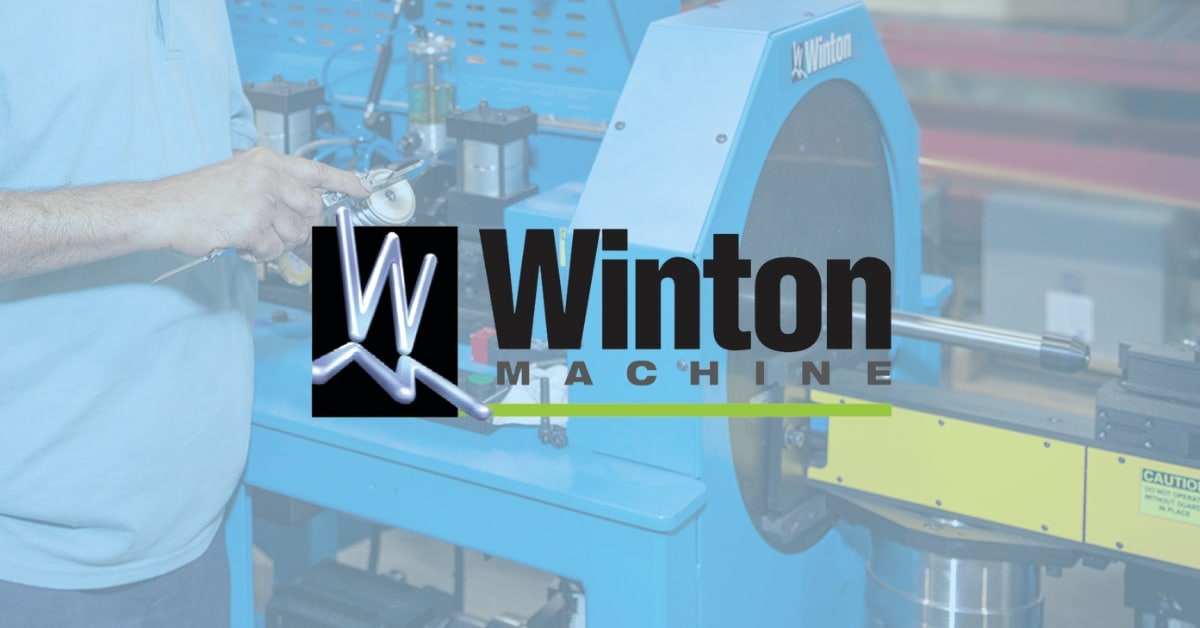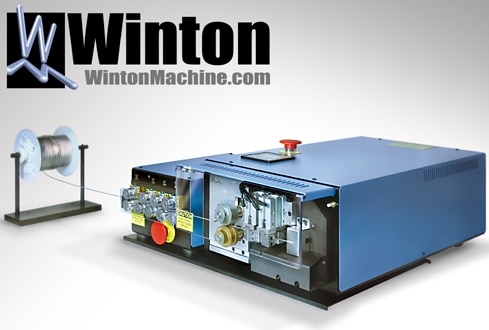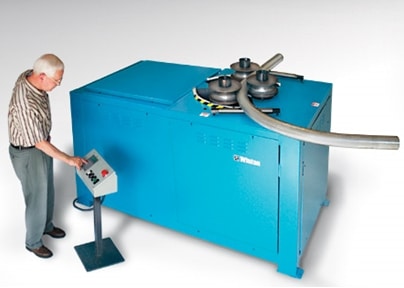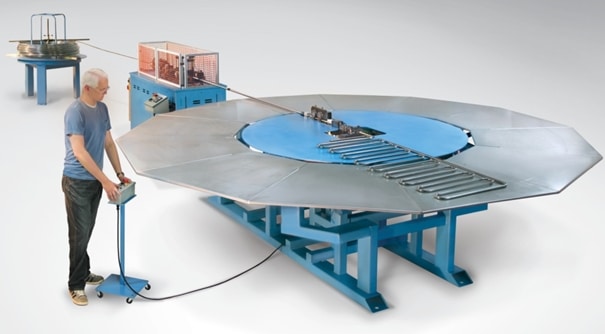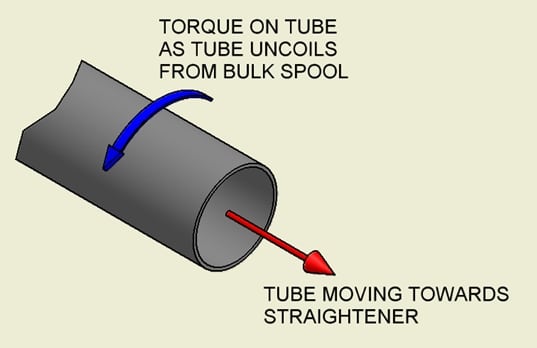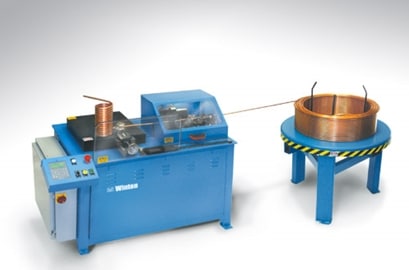Feeding The Process – How Seemingly Insignificant Forces Can Influence a Tube Fabrication Process
Pitfalls in Feeding
The process of advancing or feeding a tube during a forming process can seem straight forward. Simply don’t loose track of the length of tube advanced and you have it made. Quite often it is not that simple. For example, in a roll bending process, the weight of the tube itself down stream of the bending process can influence the radius being formed. Needless to say this is one of may seaming insignificant forces that can produce unwanted results.
Feeding A Roll Bender
Roll benders come in numerous types. However, they all share a common feature; they typically bend large radii while the tube is simultaneously rolling thru a set of three roll dies. In general, as a tube is passed thru these roll dies, the position of the tube’s center of gravity is always changing. Depending on the radius being rolled, the actual radius formed can be influenced by the every changing position of the center of gravity (weight of the tube). In short, the weight of a tube can produce a torque or twist on the overall tube thus effecting the section being bent at that moment in time.
The influence of a tube’s weight on a roll bending process becomes more apparent as:
- The length of the profile increases
- The bend radius increases
- The tube diameter decreases and/or the wall thickness decreases
- The center of gravity of the tube becomes further away from the bending rolls
Minimizing the influence of tube’s weight on a roll bending process can often be overcome by external tube supports. These supports are often designed to impart a counter force on the tube to overcome the effects of gravity.
Feeding a Rotary Wipe Bender
There are some rotary wipe benders that feed from a coil; see Figure 1 below. In this example a bulk spool of tubing is pulled into a straightener and then bent using a wipe bending process.
After a bend is made, the machine’s controller advances the tube to the next bend. Sounds simple enough. However, the torsional effects (see Figure 2 below) of the bulk material as it uncoils into the straightener and then propagates into the bending process can induce a slight twist (plane change) between bends.
Minimizing the torsonial forces as the tube uncoils can often be critical to a fabrication process. Minimizing these torsionial forces often requires matching the payoff process to the process it is feeding. The process often starts with choosing between a vertical payoff and a horizontal payoff.
Feeding a Coil Bending Machine
A coil bending machine pulls material from a bulk spool in similar fashion to that of the wipe bender described above. In this particular case (see Figure 3 below), the pitch of the bent coil can be influenced by the torsional effects of the tube entering the straightener.
If the bulk material being pulled thru the straightener is twisting an every slight amount due to the torsional forces being produced by the uncoiling of the bulk incoming material, then the pitch of the coil bending formed by the bending machine may vary from a quality perspective. This can translate into a coil’s ability to transfer heat not to mention its ability to fit into an overall assembly.
Depending on the type of payoff used, the torsion on a tube entering the straightener can osculate in direction and magnitude. This tends to further complicate most efforts to compensate for this seaming insignificant force.
Why the Twist?
For many years tube consumers have demanded larger and larger level wound (LWC) package sizes to allow for more production between coil changes. LWC producers also pursue lower manufacturing cost using faster furnace speeds and higher density loading. Combining both these conditions with increased coil size can lead to under annealed product and therefore may be the root of a tube twisting issue as the tube is de-coiled.
After a LWC is banded at the factory, the LWC then enters the furnace firebox. The mass of copper rapidly absorbs heat and that heat is naturally concentrated on exposed surfaces, thus the coil OD, ID and sides see most of the heat while the core of the coil sees the least. The result is full recrystallization of exposed and near exposed surfaces while a gradient of recrystallization can occur within the coil core. Furthermore, if the stars align just right, that gradient can exist within an individual tube cross-section.
Because that disparity of recrystallization within a cross-section, the tube can naturally twist or turn while merely finding the position that offers it the least resistance to flow. Copper is not unique in hunting the easiest path when undergoing deformation of any sort including de-coiling.

George Winton, P.E. designs and builds CNC tube fabrication equipment for Winton Machine in Suwanee, GA. He can be reached at gwinton@wintonmachine.com or 888.321.1499.
Related Documents
About the Machines We Build
All of our semi-rigid coax and tube fabrication machines at Winton are designed, manufactured, and tested in-house. We have a large line of standard products as well as the ability to engineer the best solution for our customer’s needs. Our experienced sales staff makes sure that our customers can justify their capital equipment investment by offering a solution that is exactly what they need in order to manufacture their parts. Please contact us today to discuss your project.


